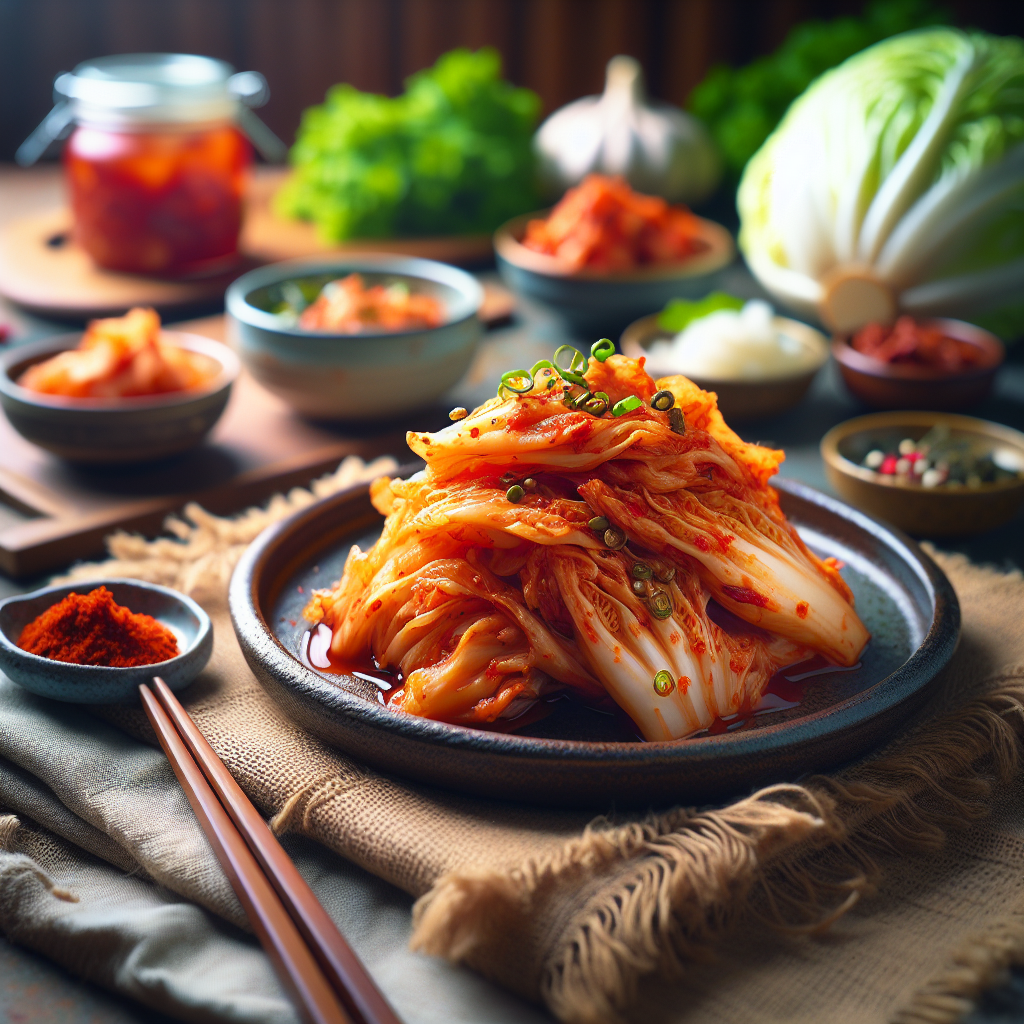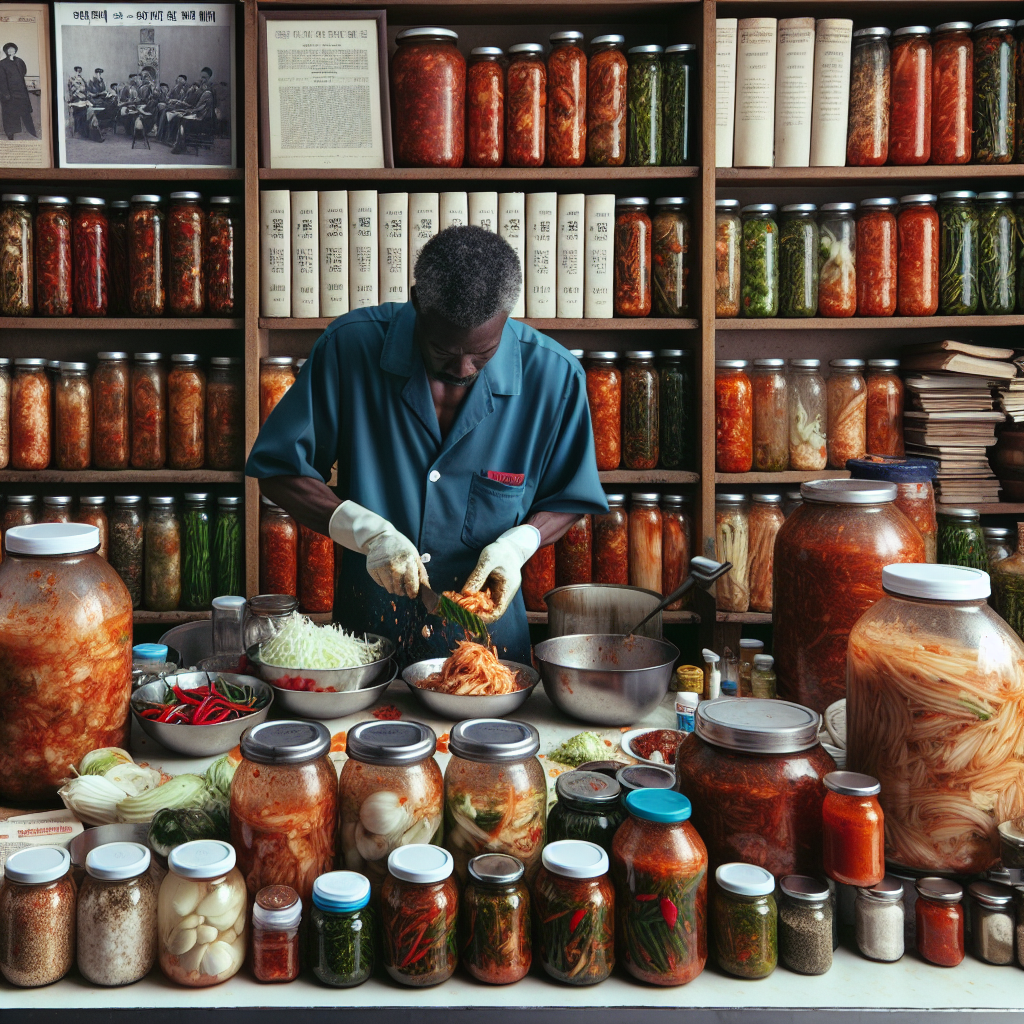Dive into kimchi—a traditional Korean side dish known for its spicy, tangy flavor and distinctive crunch. The striking red hue of fermented cabbage and radishes, often combined with green onion, is a familiar sight in Korean meals. Beyond tantalizing your taste buds, kimchi is a symbol of Korean heritage and has been a staple on dining tables for centuries.


Recipe
Ingredients:
- 1 large head Napa cabbages
- 1/4 cup sea salt
- Water, enough to cover cabbage
Kimchi Paste:
- 1 tablespoon minced garlic
- 1 teaspoon minced ginger
- 1-2 tablespoons Korean red pepper flakes
- 1 tablespoon sugar
- 2-3 tablespoons fish sauce
- 1 tablespoon rice vinegar
- 1 medium daikon radish, cut into matchsticks
- 4 scallions, chopped
Instructions:
- Cut the cabbage into 2-inch strips, salt it, cover with water, and let it sit with a weight on top for 1-2 hours.
- Mix garlic, ginger, red pepper flakes, sugar, fish sauce, and vinegar to create the paste. Stir in daikon and scallions.
- Rinse the cabbage, squeeze out excess, and mix thoroughly with the paste.
- Pack into a jar, leaving an inch of space, and let it ferment at room temperature for 1-5 days.
- Store in the refrigerator and enjoy as it continues to ferment.


Cultural Significance and History
Kimchi began as a way to keep vegetables during harsh winter months, starting in the Koryeo Dynasty. Turning to kimchi was a smart way to handle the lack of fresh produce. It evolved from simple salted vegetables to include chili pepper, garlic, and seafood seasoning.
Today, kimchi is found at nearly every Korean meal, from home-cooked dinners to large feasts. With probiotic properties, many are eager to include it in their diets, and it’s becoming more available in grocery stores and on food blogs.
The cost of kimchi can vary, but the experience of enjoying authentic kimchi is always worthwhile. Making kimchi at home is fun and rewarding, allowing you to tailor the flavors and heat to your liking and to watch the fermentation process.
When enjoying homemade kimchi, remember you’re partaking in a cultural legacy. Each bite connects you to centuries of tradition and celebrates Korean cuisine. So try making it yourself, and let your kitchen be filled with the rich, tangy aroma of this Korean staple.

